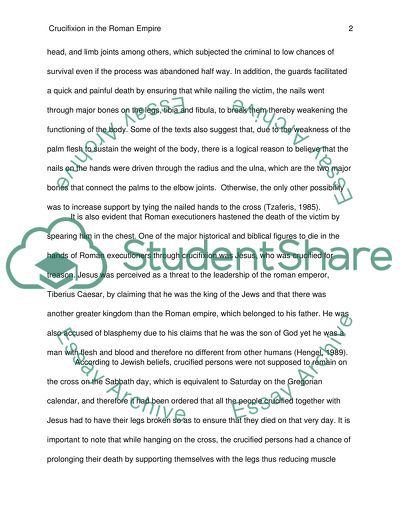Cite this document
(“Crucifixion in the Roman Empire Research Paper Example | Topics and Well Written Essays - 1250 words”, n.d.)
Retrieved from https://studentshare.org/religion-and-theology/1447714-crucifixion-during-the-roman-empire
Retrieved from https://studentshare.org/religion-and-theology/1447714-crucifixion-during-the-roman-empire
(Crucifixion in the Roman Empire Research Paper Example | Topics and Well Written Essays - 1250 Words)
https://studentshare.org/religion-and-theology/1447714-crucifixion-during-the-roman-empire.
https://studentshare.org/religion-and-theology/1447714-crucifixion-during-the-roman-empire.
“Crucifixion in the Roman Empire Research Paper Example | Topics and Well Written Essays - 1250 Words”, n.d. https://studentshare.org/religion-and-theology/1447714-crucifixion-during-the-roman-empire.


